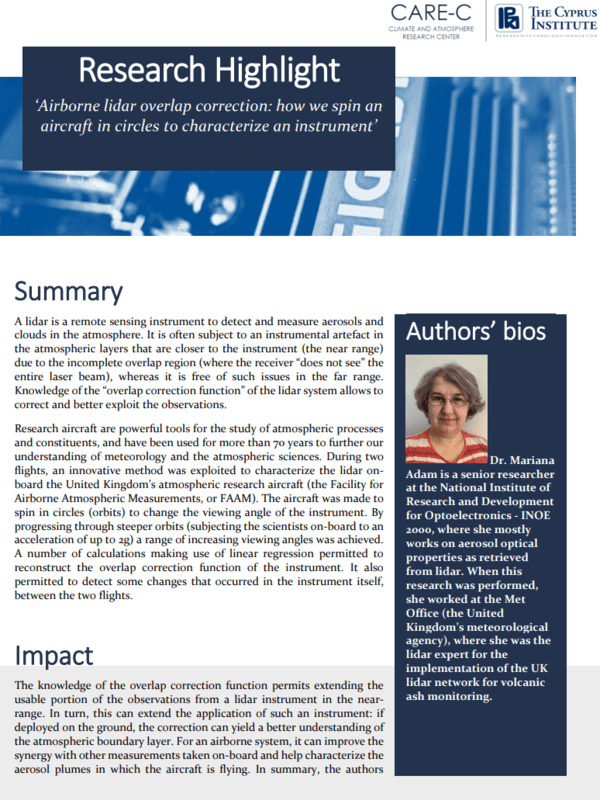
Airborne lidar overlap correction: how we spin an aircraft in circles to characterize an instrument
A lidar is a remote sensing instrument to detect and measure aerosols and clouds in the atmosphere. It is often subject to an instrumental artefact in the atmospheric layers that are closer to the instrument (the near range) due to the incomplete overlap region (where the receiver “does not see” the entire laser beam), whereas it is free of such issues in the far range. Knowledge of the “overlap correction function” of the lidar system allows to correct and better exploit the observations.
Research aircraft are powerful tools for the study of atmospheric processes and constituents, and have been used for more than 70 years to further our understanding of meteorology and the atmospheric sciences. During two flights, an innovative method was exploited to characterize the lidar on-board the United Kingdom’s atmospheric research aircraft (the Facility for Airborne Atmospheric Measurements, or FAAM). The aircraft was made to spin in circles (orbits) to change the viewing angle of the instrument. By progressing through steeper orbits (subjecting the scientists on-board to an acceleration of up to 2g) a range of increasing viewing angles was achieved. A number of calculations making use of linear regression permitted to reconstruct the overlap correction function of the instrument. It also permitted to detect some changes that occurred in the instrument itself, between the two flights.



